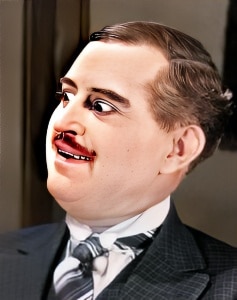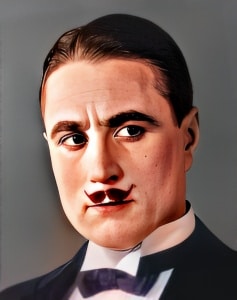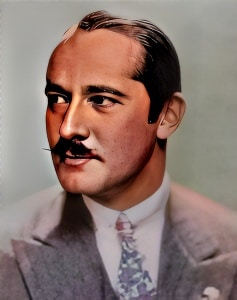 Clarence Burton, born on March 10, 1882, in Fort Lyon, Colorado, was an American stage and film actor who made significant contributions to the entertainment industry during the early 20th century.
Clarence Burton, born on March 10, 1882, in Fort Lyon, Colorado, was an American stage and film actor who made significant contributions to the entertainment industry during the early 20th century.
His career spanned the transition from silent films to sound cinema, and he is remembered for his versatile acting and presence in both mediums.
Burton’s journey in the world of entertainment began on the stage. He gained recognition as a stage actor, known for his commanding presence and ability to bring characters to life. His theatrical career allowed him to hone his acting skills and develop a strong foundation in performance, which later served him well in the burgeoning film industry.
As silent films gained popularity in the early 20th century, Clarence Burton transitioned to the world of cinema. He made his film debut in 1913 and quickly established himself as a versatile actor. Silent films required actors to convey emotions and narratives through physical expression, and Burton’s theatrical background proved invaluable in this regard.
One of Burton’s early notable film appearances was in the 1915 silent film “ The Birth of a Nation,” directed by D.W. Griffith. The film was groundbreaking for its technical innovations and storytelling, though it is now often criticized for its controversial racial content. Burton portrayed Abraham Lincoln in the film, contributing to its historical portrayal and adding depth to the narrative.
Throughout the silent film era, Burton appeared in various roles, often in character parts that showcased his adaptability as an actor. His ability to convey a wide range of emotions, from villainy to heroism, made him a sought-after actor in the burgeoning Hollywood industry.
With the arrival of sound in film during the late 1920s, many silent film actors faced challenges in adapting to the new medium. Burton, however, made a relatively smooth transition to sound cinema, demonstrating his versatility once again. He continued to act in various character roles and adapted his voice and acting style to meet the demands of sound recording.
One of his memorable sound film roles was in the 1929 film “The Broadway Hoofer,” where he portrayed a dance director. This film showcased his ability to adapt to the new era of sound and his ongoing contributions to the film industry.
Throughout his career, Burton’s ability to embody a wide range of characters made him a valuable asset to filmmakers. He appeared in over 100 films during his career, which extended into the early 1930s. His dedication to his craft and his commitment to his roles earned him respect among his peers and film audiences.
Clarence Burton’s career in film spanned the transitional period from silent cinema to sound, demonstrating his adaptability and enduring talent as an actor. His performances were marked by depth and emotion, contributing to the success of many films during a time of significant change in the industry.
Clarence Burton passed away on January 23, 1933, in New York City, leaving behind a legacy of work that continues to be celebrated by those who appreciate the history of American cinema. His contributions to early Hollywood, both in silent and sound films, serve as a testament to his skill and dedication as an actor during a pivotal period in the film industry’s development.
Loading live eBay listings...




